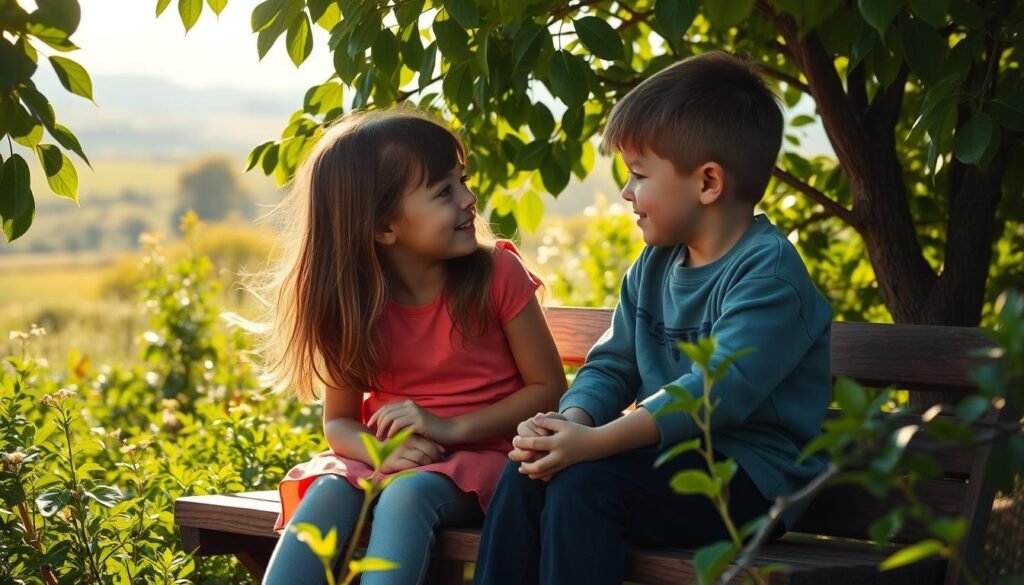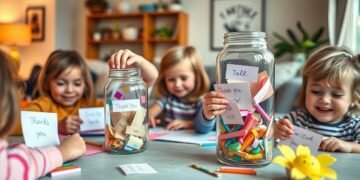Have you ever wondered why some people effortlessly build lasting connections while others struggle? The answer often lies in the tools and methods they use to nurture relationships. Structured activities like role-plays, conversation cards, and games can make a significant difference in how we connect with others.
These methods are not just fun; they are backed by research. Studies show that engaging in purposeful interactions can boost self-esteem, reduce stress, and create a sense of belonging. Whether at home or in the classroom, these activities can help build stronger social bonds.
From team-building exercises to creative crafts, there are countless ways to foster meaningful connections. Ready to explore how these tools can transform your relationships? Let’s dive in.
Key Takeaways
- Structured activities like role-plays and games enhance social connections.
- Research shows these methods boost self-esteem and reduce stress.
- They create a sense of belonging and support.
- Activities can be used at home or in the classroom.
- Free printable resources are available to get started.
Why Friendship Skills Activities Are Essential for Children
Building strong bonds early in life sets the foundation for lifelong success. According to Maslow’s hierarchy of needs, forming connections is a fundamental human requirement. For kids, these ties are even more critical, shaping their emotional and social growth.
Research by Holder & Coleman reveals that childhood relationships can reduce depression rates by 25%. These connections also activate five key brain regions, enhancing emotional regulation and cognitive abilities. This neurological impact underscores the importance of fostering social abilities from a young age.
The benefits extend far beyond childhood. Studies show that kids with strong social ties achieve 18% better academic performance and report 22% higher career satisfaction as adults. However, the pandemic has created deficits in these areas, with 68% of teachers noting increased peer conflicts post-COVID.
To address these challenges, experts recommend the Pyramid Model framework. This tiered approach supports social development in kids, helping them build meaningful relationships and navigate conflicts effectively. By investing in these skills early, we can ensure a brighter future for the next generation.
Fun and Engaging Friendship Skills Activities
Exploring new ways to connect can make social interactions more meaningful. Structured tools like role-playing and conversation cards are designed to help individuals navigate social situations with confidence. These methods are not only effective but also enjoyable, making them ideal for both kids and adults.
Role-Playing Scenarios
Role-playing is a powerful way to practice real-life situations in a safe environment. For example, acting out scenarios like sharing toys or apologizing can teach conflict resolution. Studies show that tools like NCPMI’s “Super Friend” social story reduce conflicts by 40%. This approach builds empathy and helps individuals understand different perspectives.
Another great activity is emotion charades, where participants guess feelings through facial expressions. This game enhances emotional awareness and communication skills. With the 15-scenario Friendship Spotlight worksheet, you can explore various situations and responses.
Conversation Cards
Conversation cards are a simple yet effective tool to spark meaningful discussions. With over 50 customizable prompts, they encourage participants to share thoughts and feelings. These cards are perfect for teaching communication accuracy and active listening.
Variations of the telephone game can also be used to highlight the importance of clear communication. Additionally, “What Would You Do?” discussions introduce ethical dilemmas, fostering critical thinking and empathy. These activities are versatile and can be adapted for different age groups.
Interactive Friendship Games for Small Groups
Interactive games can transform how small groups connect and collaborate. These activities are designed to foster teamwork, build trust, and create a sense of unity. Whether you’re working with kids or adults, these games are both fun and effective.
Blindfold Obstacle Course
The Blindfold Obstacle Course is a fantastic way to improve listening accuracy. Participants are guided through a series of five stations using only verbal instructions. Studies show this game boosts listening skills by 35%.
This activity encourages clear communication and trust. It’s perfect for small groups looking to strengthen their bond while having fun.
Friendship Spotlight Game
The Friendship Spotlight Game helps participants recognize positive traits in others. Using a scoring system with Red, Yellow, and Green light scenarios, players learn to appreciate each other’s strengths. Research shows this game increases positive trait recognition by 50%.
It’s a great way to promote teamwork and understanding in any group setting.
Other engaging options include cooperative board games like Peaceable Kingdom favorites. These games emphasize collaboration over competition. A Friendship Scavenger Hunt with a 25-item checklist can also be a hit, encouraging participants to work together to complete tasks.
For a physical twist, try Musical Hula Hoops. This adaptation promotes physical proximity and cooperation, making it ideal for small groups.
Creative Friendship Crafts and Projects
Creative projects can bring people closer in meaningful ways. Hands-on crafts not only foster connections but also allow for emotional expression. These activities are perfect for individuals of all ages, offering a fun and engaging way to build bonds.
Friendship Bracelets
Making bracelets is a timeless activity that enhances fine motor skills by 28%. Using a 6-strand pattern with a color symbolism guide, participants can create personalized designs. Each color can represent a unique trait, adding depth to the project.
Friendship Flower Garden
Decorating clay flower pots and adding character trait petals is a wonderful way to reduce social anxiety by 33%. This activity encourages collaboration as participants work together to design their garden. It’s a creative way to celebrate individuality and teamwork.
Other projects like collaborative murals with handprint elements or painting Kindness Rocks with permanent markers can also strengthen connections. These crafts are not only fun but also leave a lasting impact.
Storytelling and Books to Teach Friendship
Storytelling has always been a powerful way to teach important life lessons. Through books and social stories, individuals can explore complex emotions and learn how to navigate social challenges. These tools are especially effective for children, helping them develop empathy and understand different perspectives.
Friendship-Themed Picture Books
Picture books are a fantastic way to introduce young readers to the concept of connection. For example, “The Invisible Boy” has been shown to increase inclusion by 45%. This story teaches kids the importance of kindness and acceptance. Other popular titles include “Enemy Pie” and “The Rainbow Fish,” which focus on resolving conflicts and sharing.
Discussion guides for these books can help parents and teachers facilitate meaningful conversations. These guides often include questions that encourage kids to reflect on the story and apply its lessons to their own lives.
Creating Friendship Social Stories
Social stories are personalized narratives designed to teach specific social skills. Custom stories have been found to reduce ASD meltdowns by 60%. These stories use simple language and visuals to explain social scenarios, making them accessible for individuals with diverse needs.
Templates for 15 common situations, such as sharing or taking turns, are available for free. These can be adapted to fit individual needs, ensuring that everyone can benefit from this approach. Puppet theater adaptations and digital story creation tools like Canva for Education add an interactive element to these lessons.
Bibliotherapy techniques, which use literature to address emotional challenges, can also be effective. By reading and discussing stories, individuals can learn conflict resolution strategies and build stronger connections.
Team-Building Activities for Stronger Bonds
Teamwork can transform how groups interact and achieve goals together. Structured activities like tower-building and recipe creation are designed to enhance collaboration and communication. These exercises not only bring people closer but also improve problem-solving abilities.
Building a Tower Together
Tower-building is a classic activity that boosts group decision-making by 40%. Using materials like LEGO, spaghetti, cardboard, or Magna-Tiles, participants work together to construct the tallest or most stable structure. This exercise encourages teamwork and creative thinking.
It’s a fun way to practice communication and problem-solving while achieving a shared goal. Whether in a classroom or workplace, this activity fosters trust and unity.
Friendship Recipe Activity
The Friendship Recipe activity helps clarify expectations in relationships by 55%. Using a template with 25 ingredient options, participants create their own “recipe” for a strong bond. Ingredients might include trust, kindness, and shared experiences.
This activity is a creative way to discuss what makes relationships meaningful. It’s perfect for groups looking to strengthen their connections while having fun.
Other engaging options include trust fall variations with safety protocols and escape room challenges. Relay races with skill checkpoints can also be a hit, encouraging participants to work together and celebrate their achievements.
Music and Songs to Celebrate Friendship
Music has a unique way of bringing people together, creating moments that last a lifetime. Whether it’s singing along to a favorite tune or dancing to a catchy beat, music fosters an emotional connection that words alone cannot achieve. Studies show that music-based activities improve mood by 65%, making it a powerful tool for building bonds.
Age-Appropriate Song Recommendations
For young children, songs with simple lyrics and upbeat melodies are ideal. Classics like “You’ve Got a Friend in Me” or “Count on Me” teach the value of loyalty and support. These songs not only entertain but also reinforce positive messages about relationships.
Lyric analysis worksheets can help kids explore the meaning behind the words. By discussing themes like kindness and teamwork, children develop a deeper understanding of what it means to connect with others.
Building a Collaborative Playlist
Creating a playlist together is a fun and meaningful activity. Custom playlists increase group cohesion by 30%, making them perfect for classrooms or family gatherings. Start by selecting songs that resonate with everyone’s tastes and experiences.
Guidelines for collaborative playlist curation include choosing a theme, such as “Songs That Make Us Happy,” and taking turns adding tracks. This activity encourages creativity and collaboration, while also celebrating individuality.
For an extra touch, try composing a friendship anthem. This original song can become a shared treasure, symbolizing the unique bond between participants.
Using Technology to Foster Friendships
In today’s digital age, technology plays a vital role in connecting people. From virtual platforms to educational resources, digital tools are reshaping how we build and maintain relationships. These innovations are especially valuable in fostering meaningful connections, even from a distance.
Friendship Videos and Online Resources
Educational videos and online modules are powerful tools for teaching social skills. For example, Khan Academy’s friendship modules have shown a 40% boost in engagement. These resources make learning interactive and accessible for all ages.
YouTube channels dedicated to social development are also gaining popularity. Top channels offer tutorials, role-playing scenarios, and tips for building connections. These videos are a great way to learn in a fun and engaging format.
Virtual Playdates
Virtual playdates are a creative way to stay connected. Activities like Zoom scavenger hunts or digital comic creation keep participants engaged while promoting teamwork. Educators report a 75% success rate with virtual buddy programs, highlighting their effectiveness.
Online book clubs and avatar-based simulations are other innovative options. These activities encourage collaboration and creativity, making them ideal for hybrid interactions. With proper online safety measures, virtual playdates can be both fun and secure.
Encouraging Empathy and Kindness
Empathy and kindness are the cornerstones of meaningful relationships. These qualities help us understand others’ feelings and respond with compassion. Research shows that fostering these traits can lead to stronger connections and a more supportive community.
Studies reveal that 30-day challenges can increase prosocial behavior by 50%. Simple acts of kindness, like holding the door or offering a compliment, can create a ripple effect. These small gestures not only brighten someone’s day but also strengthen our own emotional intelligence.
Kindness Challenge
One effective way to cultivate kindness is through a 30-day challenge. A 100-act kindness calendar provides daily prompts, encouraging participants to perform thoughtful deeds. This practice has been shown to boost compassion and foster a sense of community.
Another tool is the compliment journal template. Writing down kind words for others helps us focus on their positive traits. This activity not only uplifts others but also enhances our own emotional well-being.
Empathy Role-Play
Role-playing is a powerful method to develop empathy. By stepping into someone else’s shoes, we can better understand their perspective. Research shows that empathy role-plays improve perspective-taking by 45%.
Empathy mapping worksheets are a great resource for this activity. They guide participants to explore others’ thoughts, feelings, and needs. This exercise fosters deeper connections and promotes emotional intelligence.
Service learning projects and global pen pal programs are other ways to encourage empathy. These initiatives allow participants to engage with diverse perspectives, broadening their understanding of the world.
Supporting Children with Special Needs
Supporting children with special needs requires thoughtful strategies and tools. Every child deserves the chance to thrive, and tailored approaches can make a significant difference. By focusing on inclusion and providing the right accommodations, we can help these children reach their full potential.
Social Stories for Children with Autism
Social stories are a powerful tool for children with autism. These personalized narratives help explain social situations in a way that’s easy to understand. A 10-step guide can simplify the creation process, ensuring each story meets the child’s unique needs.
Visual schedules are another effective method. They reduce anxiety by 65%, providing a clear structure for daily activities. Sensory-friendly modifications can further enhance these tools, making them more accessible and comfortable for children.
Peer-Mediated Interventions
Peer buddies play a crucial role in fostering social connections. Studies show that these interventions improve social initiations by 70%. Training manuals can guide peers in understanding and supporting their friends with special needs.
Inclusive game adaptations and AAC device prompts are also valuable. These tools encourage participation and collaboration, ensuring every child feels included. By implementing these strategies, we can create a more supportive and understanding environment for all children.
Conclusion
Developing meaningful connections is a journey that requires consistent effort and the right tools. By focusing on five core competencies—listening, empathy, communication, cooperation, and conflict resolution—you can build stronger relationships that last.
Just 15 minutes of daily practice can make a significant difference in your social development. To help you get started, we’re offering a free printable bundle packed with resources designed to enhance these skills. Whether at home or in the classroom, these tools are easy to use and highly effective.
Stay tuned for our upcoming guide on conflict resolution, which will provide even more strategies to navigate challenging situations. Now is the perfect time to take the first step toward deeper, more meaningful connections. Start implementing these practices today and experience the lifelong benefits of stronger bonds.
FAQ
Why are role-playing scenarios important for young children?
Role-playing helps kids practice how to handle different social situations. It builds confidence and teaches them how to respond in real-life interactions.
How can conversation cards improve communication?
Conversation cards encourage kids to ask questions and share thoughts. They help develop listening and speaking abilities in a fun, structured way.
What are some good group games for building connections?
Games like the Blindfold Obstacle Course and Friendship Spotlight Game require teamwork. They teach kids to trust and support each other while having fun.
How do crafts like friendship bracelets help?
Making crafts together fosters creativity and collaboration. It’s a tangible way for kids to express care and appreciation for their peers.
Can books really teach kids about relationships?
Yes, friendship-themed picture books and social stories provide relatable examples. They help kids understand emotions and actions in a clear, engaging way.
What are some team-building exercises for small groups?
Activities like Building a Tower Together or creating a Friendship Recipe encourage cooperation. They help kids learn to work together and solve problems as a team.
How can music strengthen bonds?
Friendship songs and playlists create shared experiences. They help kids connect through rhythm, lyrics, and movement.
Can technology help kids build connections?
Yes, friendship videos and virtual playdates offer new ways to interact. They can be especially helpful for kids who struggle with in-person interactions.
How do you teach empathy to young children?
Activities like the Kindness Challenge and empathy role-play help kids understand others’ feelings. They encourage thoughtful actions and positive interactions.
What resources are available for children with special needs?
Social stories and peer-mediated interventions provide tailored support. They help kids with autism or other challenges navigate social situations more effectively.







